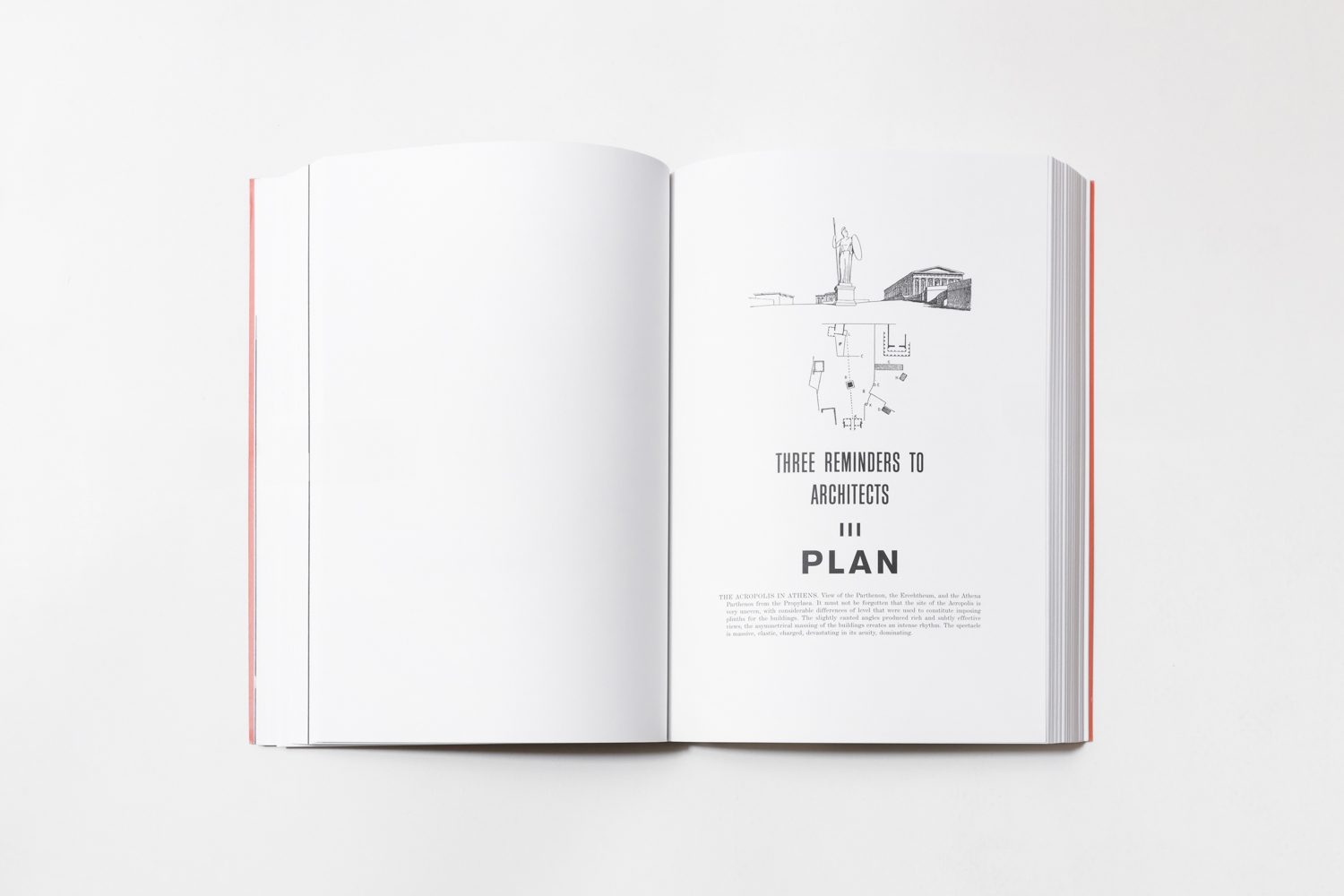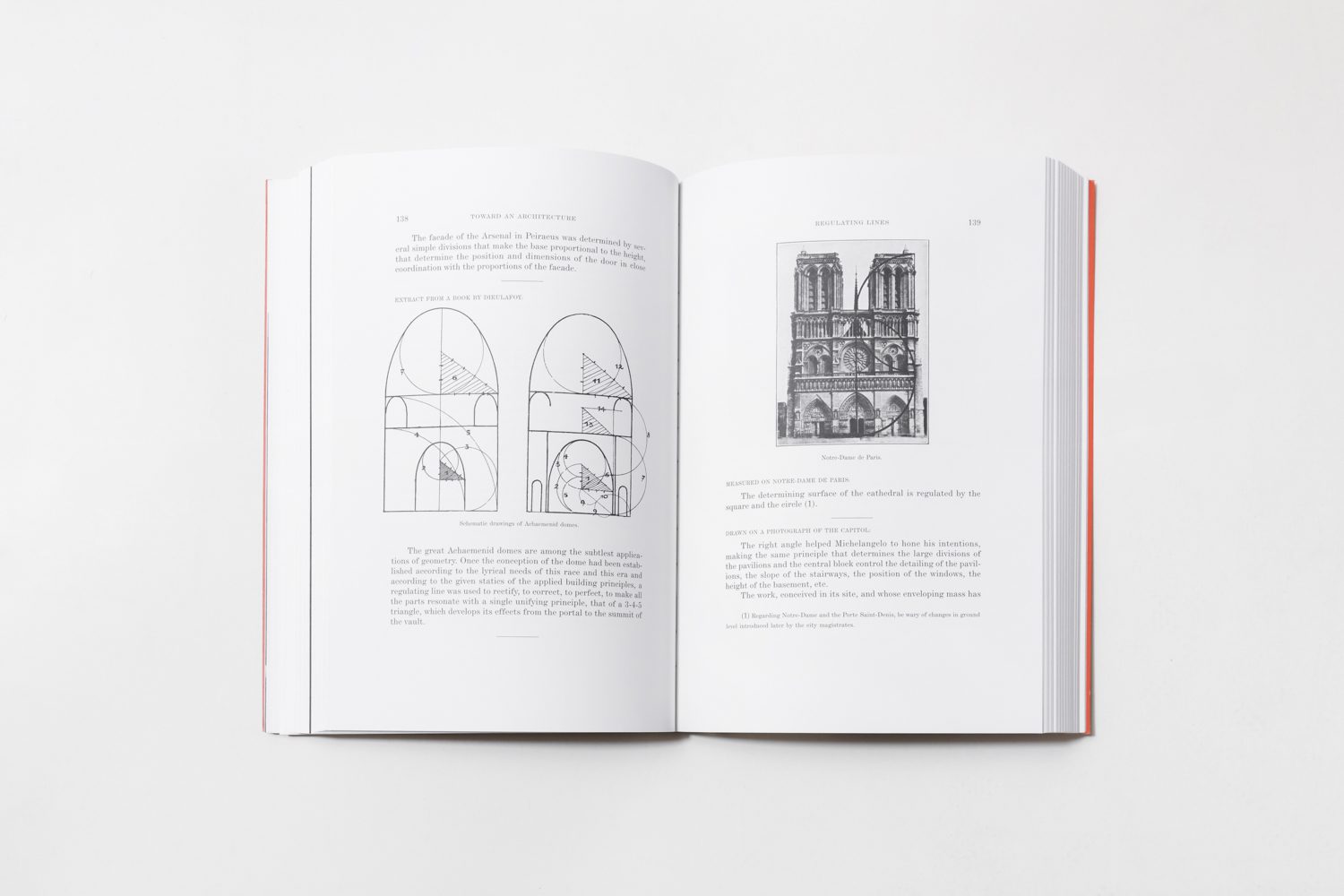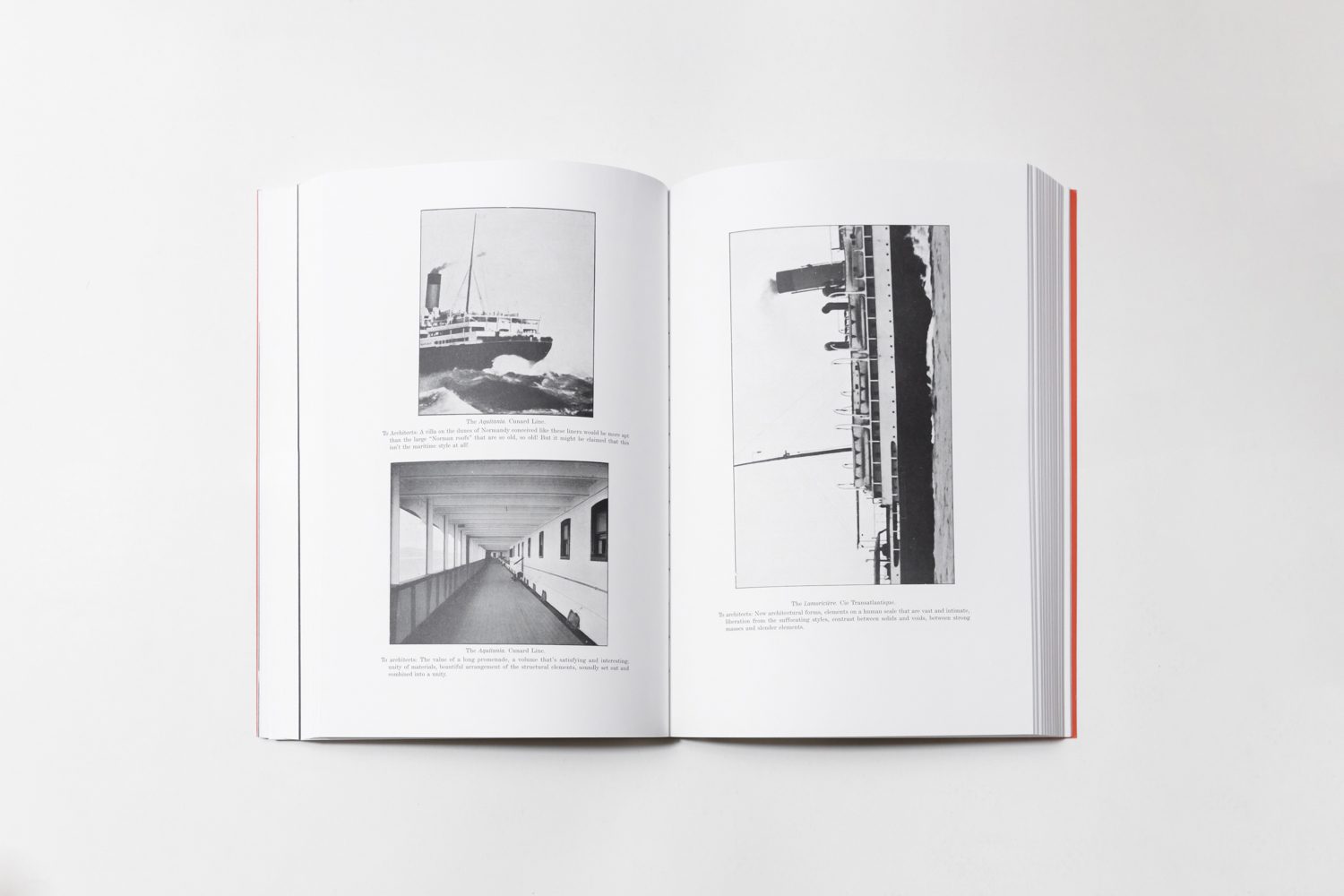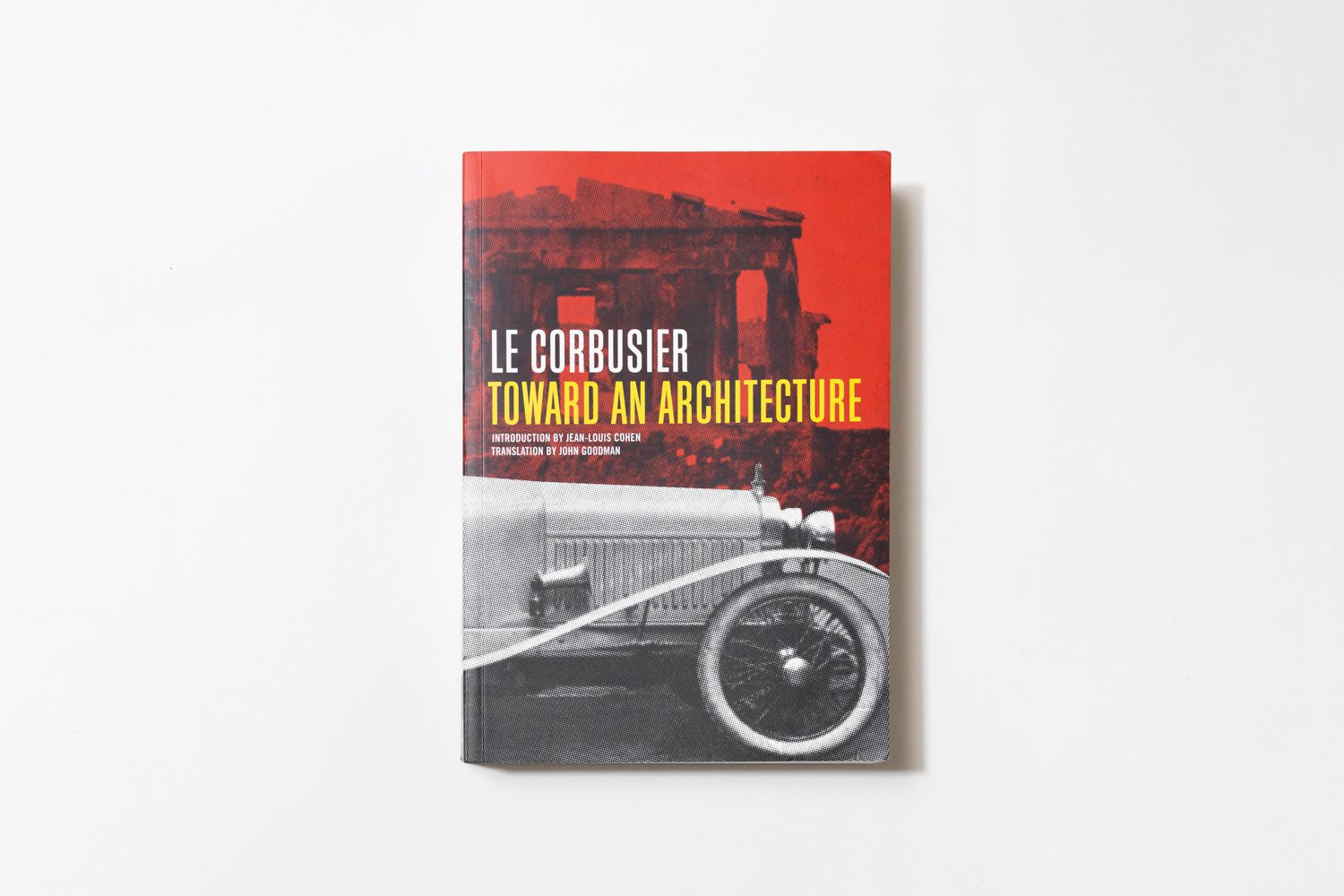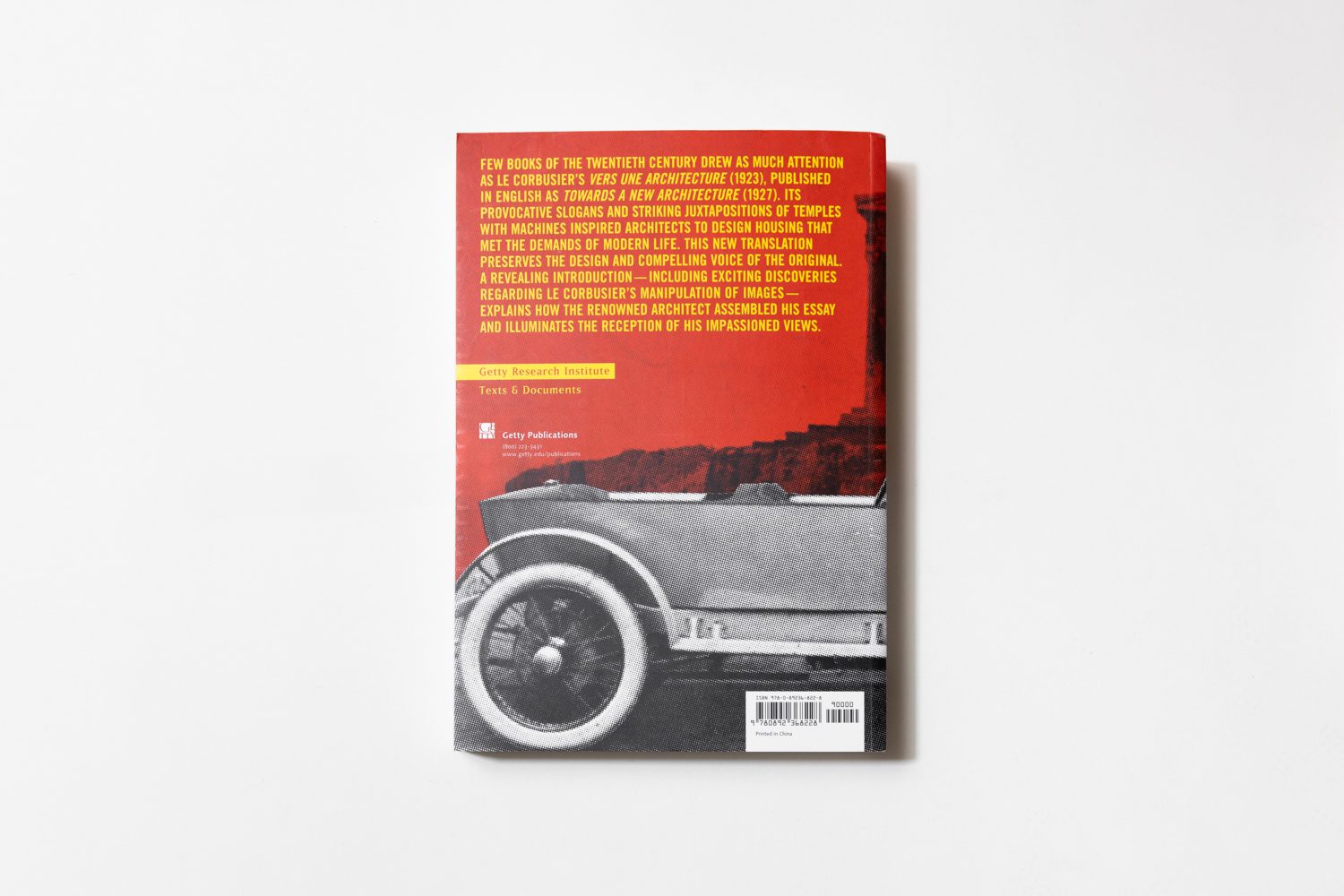ON THE OCCASION OF THE CENTENNIAL ANNIVERSARY OF THE BOOK ‘VERS UNE ARCHITECTURE,’ ART4D EXPLORES THIS SEMINAL ARCHITECTURE BOOK BY LE CORBUSIER WHO PRAISED ENGINEERING AND MECHANICAL INVENTION AS THE SPIRIT OF ‘MODERN DESIGN’
TEXT: MONGKON PONGANUTREE
PHOTO: KETSIREE WONGWAN
(For Thai, press here)
Vers une Architecture
By Le Corbusier
G. Cres et Cie., Paris, 1923
English edition by Getty Research Institute
Translation by John Goodman
7 x 1.5 x 10 inches
358 pages
ISBN 978-089-236-822-8
The past year witnessed a relatively overlooked yet significant event in the realm of architectural literature. The year 2023 marked the centennial anniversary of the publication of Le Corbusier’s seminal work, ‘Vers une Architecture,’ regarded as one of the most crucial architectural books of the twentieth century. Architectural critic Rayner Benham went so far as to say that ‘Vers une Architecture’ is the most influential architectural book, unparalleled by any other architectural literary work in the history of modern architecture, even until now.

In the year 1921, Charles Edouard Jeanneret penned architectural articles in a journal he named L’Esprit Nouveau (The New Spirit) and began adopting the name Le Corbusier to propose his architectural ideas. The content of his writings in L’Esprit Nouveau emphasized the essence of the industrial era, portraying engineering and various mechanical inventions as symbols of ‘Modern Design.’ Amidst the prevailing neoclassical dominance in early 20th-century architecture, Le Corbusier extolled engineering and engineers as trailblazers propelling the world towards remarkable progress.
It had been mentioned in a number of sources that even before his initiation of L’Esprit Nouveau, Le Corbusier (or Jeanneret at that time) had expressed his admiration for the utilitarian benefits and structural stability of cutting-edge engineering designs. In the opening chapter of ‘Vers une Architecture,’ titled ‘The Aesthetic of Engineer, Architecture,’ he wrote, “The Engineer’s aesthetic and Architecture are two things that march together and follow one from the other: the one being now at its full height, the other in an unhappy state of retrogression.”

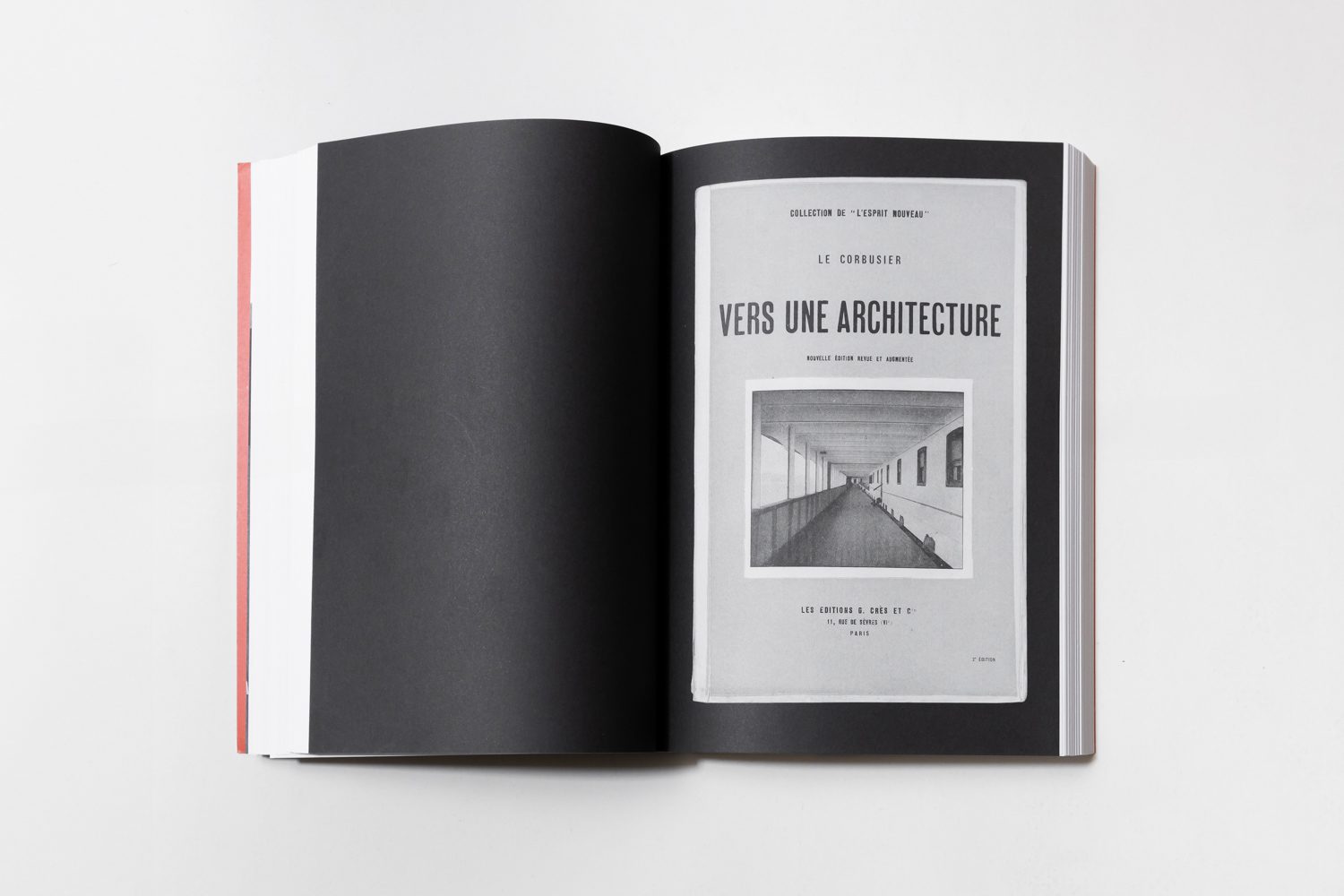
The book draws its content primarily from articles previously published in L’Ésprit Nouveau. But reorganizing them into book form and attempting to establish connections made the project quite a challenging endeavor. The publication comprises 12 original articles grouped under three major headings (Three Reminders to Architects, Regulating Lines, and Eyes That Do Not See). The remaining content consists of two sub-articles (Architecture / Mass-Production Housing) and an additional newly written article (Architecture or Revolution), which serves as the book’s ending piece. This final one proposes that change is possible by addressing problems and seeking solutions, namely through science and technology of the present, rather than being tethered to the past and stylistic conventions.
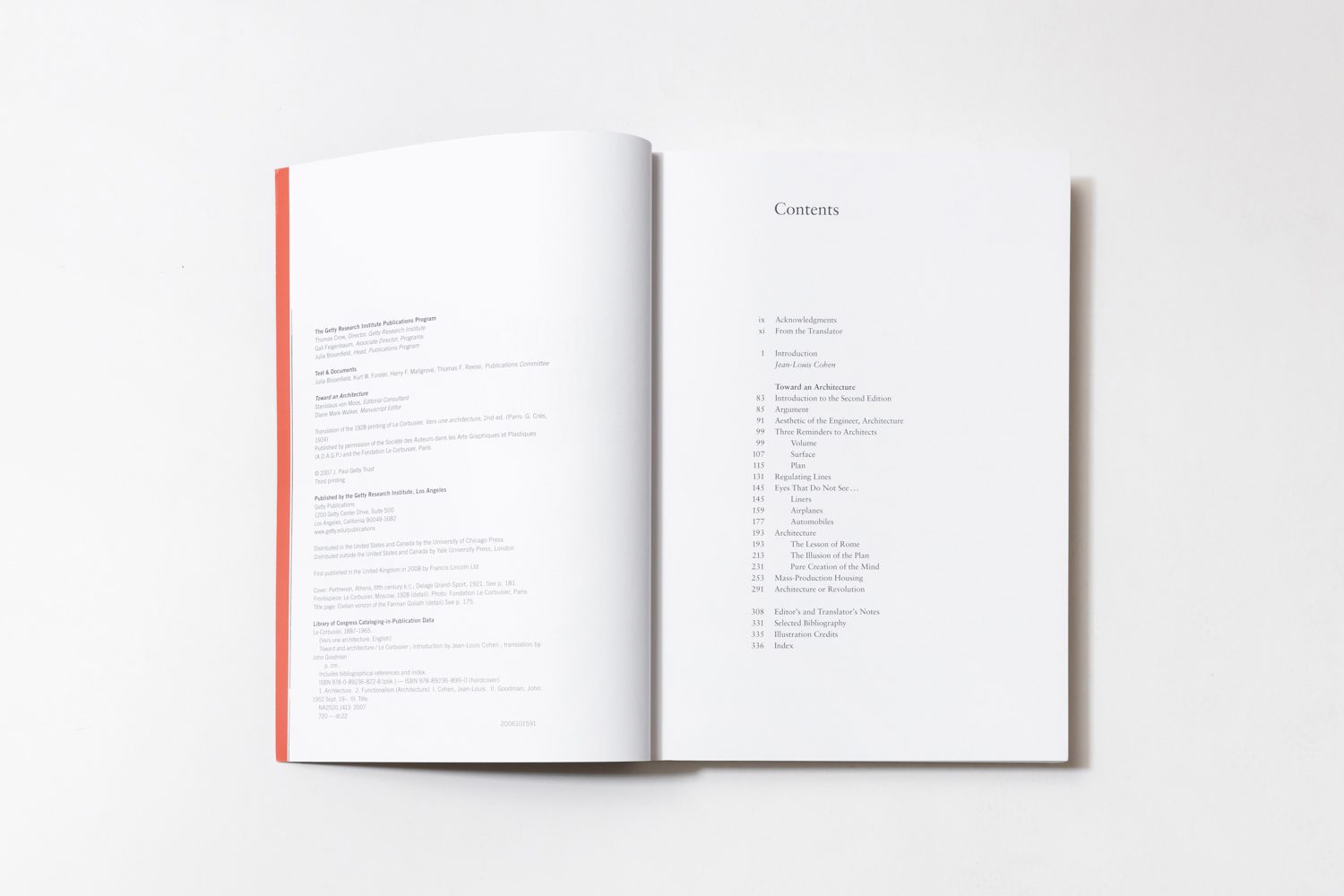
Le Corbusier praises industrial buildings, particularly industrial facilities in the United States, such as silos and airplane hangars, including modern transportation inventions, whether they be cars, trains, airplanes, or oceanliners, as products of engineering design with clear and straightforward utilitarian functions. These engineering creations exemplify the origins of his well-known statement, “The house is a machine for living in,” found in the ‘Eyes That Do Not See’ chapter, which discusses the concept of space and scale in residential design during the time when Europe was faced with a housing shortage crisis. Le Corbusier made attempts to highlight the interconnection and comparison between human proportions and scales in the design of modern transportation, which can be adapted to residential architecture.
The book delves into the concept of the city and urbanism through the examples of Rome and Athens. In the chapter ‘Architecture: The Lesson of Rome,’ Le Corbusier focuses on clustered buildings or blocks in the city of Rome. It also explores the idea of viewing a city as a collection of objects, a concept later integrated into the design of Chandigarh. Le Corbusier also views the city as a composition formed by vistas. He conducted a study on the relationship between space, movement, and vista from the Acropolis in Athens in the chapter ‘Three Reminders to Architects: Plan’ which later evolved into the Architectural Promenade. The concept was presented by Le Corbusier and involves a sequence of movements within a building, either predetermined or designed, serving as a tool in architectural design to establish orders, axes, and directions of movement within an architectural structure.
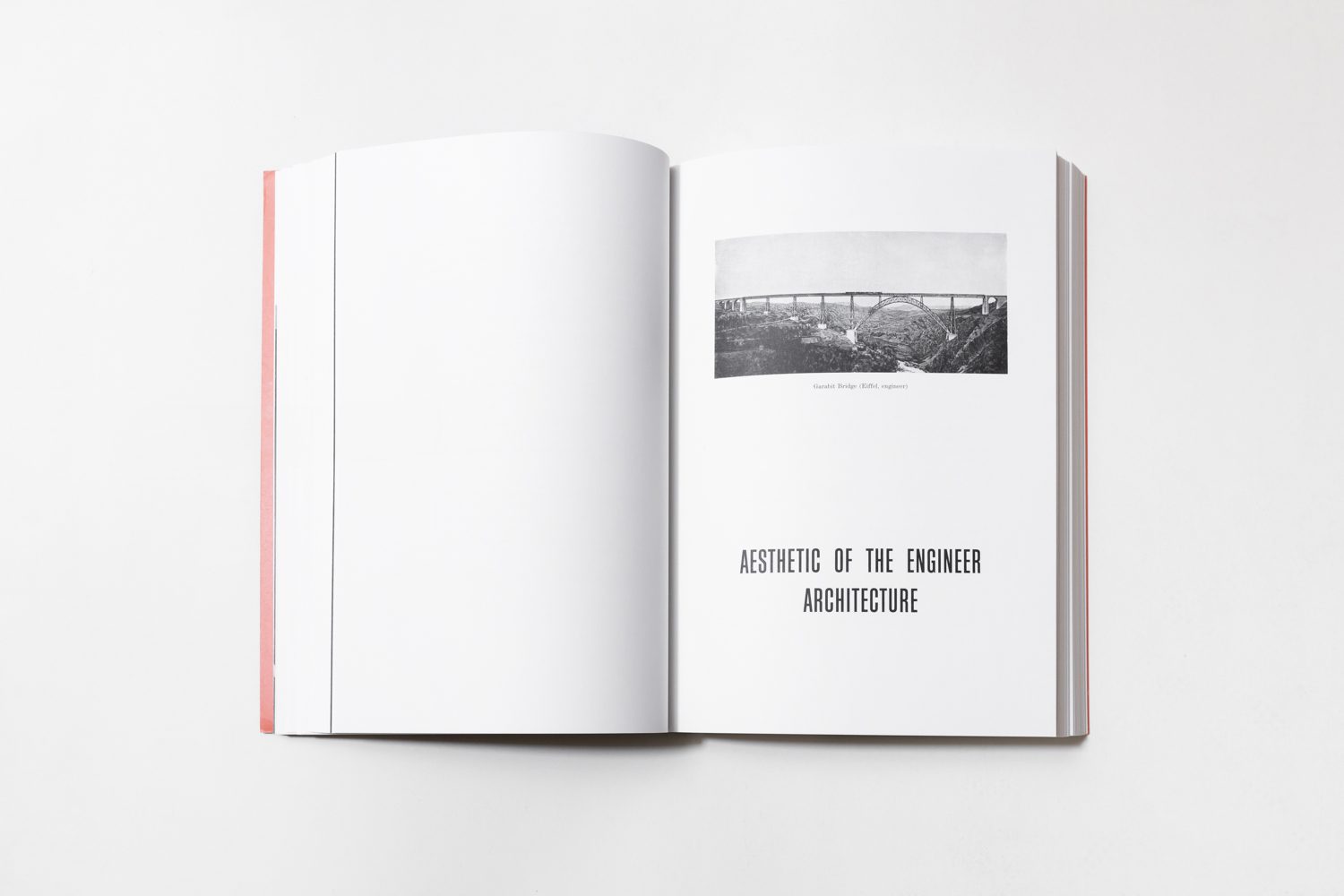

As a book, an additional intriguing aspect of ‘Vers une Architecture’ is the incorporation of layout with images to seamlessly complement the textual content. This strategic visual integration has earned the book acclaim for its effective communication and organizational structure. The use of bold and large sans-serif fonts selectively emphasizes key points, rendering the book a modern and attention-grabbing aesthetic akin to advertising materials in the early 1920s.
Moreover, the adept use of images significantly enhances the overall impact of the presented ideas and contents. The pairing of the Parthenon image with the Delage sports car in the chapter ‘Eyes That Do Not See’ is regarded as a classic and is one of the most memorable photos from the book. Le Corbusier employed these two images to assert that, just as the Parthenon is a product of the scientific and technological advancements of its era and the automobile is a manifestation of the technological prowess of its time, architecture, too, should derive from and align with the technological standards of its contemporary era.
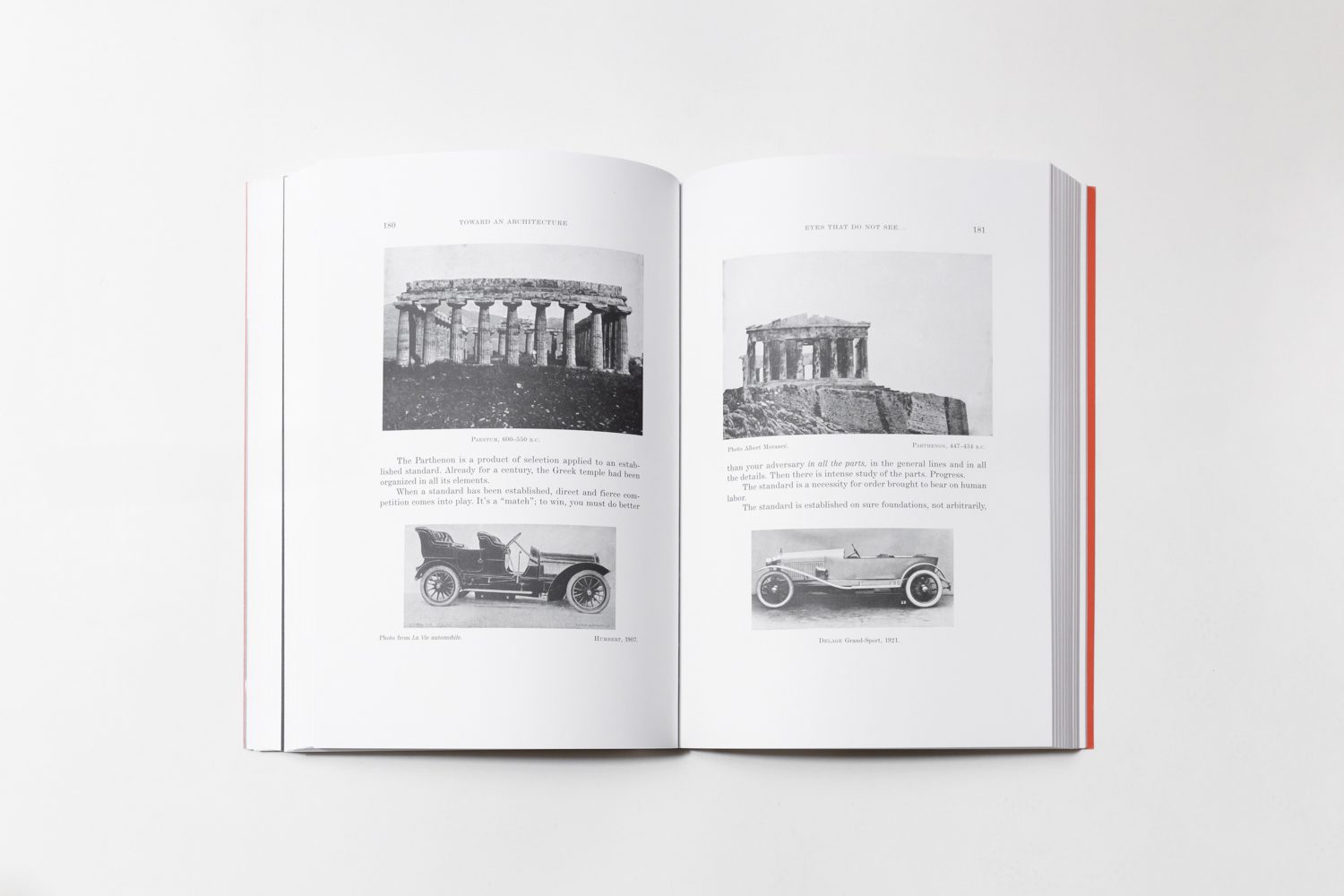
In essence, ‘Vers une Architecture’ serves as a tool for communicating Le Corbusier’s thoughts on architecture, urbanism, and the modern world. After its initial publication in 1923, the book garnered significant attention and was swiftly translated into numerous languages, with the English edition, ‘Towards a New Architecture,’ translated by Frederick Etchells, an English architect and artist, completed and published in 1927. However, the interesting story behind ‘Vers une Architecture’ does not end there. In 2007, the work underwent a new translation and reorganization by John Goodman, with the eminent French architect and architectural historian Jean-Louis Cohen serving as the editor. The new edition, titled ‘Toward an Architecture,’ features the image pairing of the Parthenon with the Delage car on the cover. Cohen contributes an extensive introduction, nearly sixty pages long, discussing Le Corbusier and his various ideas. This introduction feels almost like a separate small book within the larger original volume.
The attempt to translate this new edition of Vers une Architecture, according to Cohen, had been prepared since the late 1980s and was successfully completed in 2007. Those who have watched Cohen’s lectures on YouTube will gain a deeper understanding of the project. Cohen critiqued Etchell’s translation, pointing out inaccuracies and a lack of true comprehension of what Le Corbusier aimed to convey, including many of his ideas and concepts. Examples include the mistranslation of ‘volume’ as ‘mass’ and even the book’s title, asserting that the accurate rendition should be ‘Toward an Architecture.’

Even though the 2007 edition of ‘Vers une Architecture,’ titled ‘Toward an Architecture,’ has gained widespread acceptance among architects, scholars, and educators for its perceived accuracy and faithfulness to the original, redoing a historiography of such scale and importance must undergo rigorous examination and scrutiny from various parties involved to ensure its superiority. Certainly, this elevated level of historical writing necessitated thorough research and evaluation to ascertain its correctness and improvement over its predecessor. But no one has definitively declared one translation to be flawless, another faulty, or one preferable to the other.
Renowned architectural critic Kenneth Frampton has opined that Goodman’s new translation aligns more closely with the original French version. Yet he also observes that when it comes to rhetorical writing touching on poetry, a literal translation is not always desired, especially as no text can be translated literally all of the time without losing the original’s rhetorical rhythm.
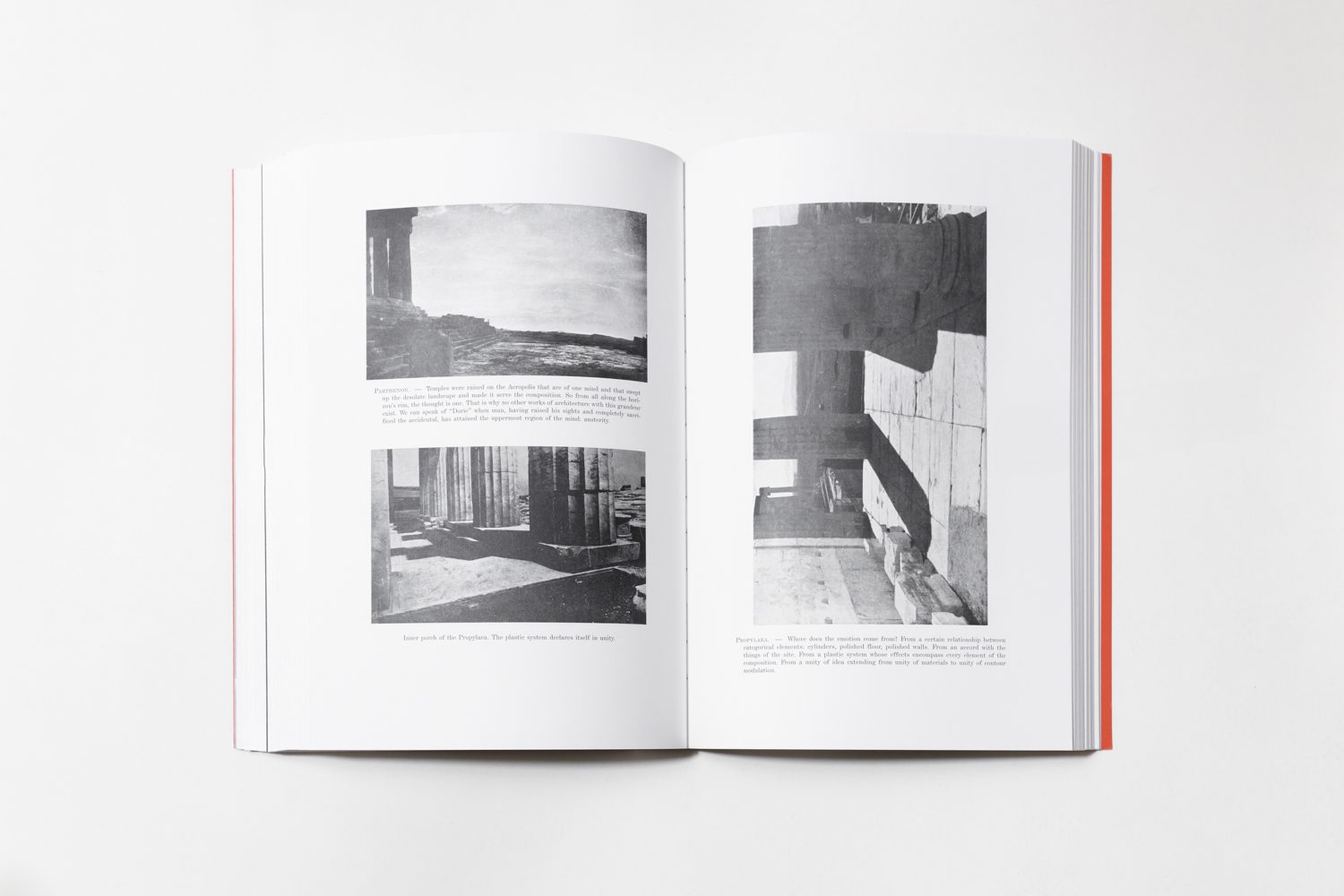
Undoubtedly, a notable aspect of ‘Toward an Architecture’ and its new translation is Cohen’s introduction. Serving as a helpful companion to the main text, it enhances readers’ understanding of the book’s content and Le Corbusier’s proposed ideas and concepts. Nevertheless, Etchells’ translation, which has been the cornerstone for architecture students since 1927, should still be celebrated for its merits and eminent contributions within the architectural realm.

It is imperative to bear in mind that the completion of this recently translated edition occurred subsequent to the release of ‘Vers une Architecture’ in 1923, which is almost a century ago. The notions and principles expounded by Le Corbusier in 1923 and subsequent years had developed into an extraordinary collection of architectural designs and works that had been physically constructed. Subsequent generations’ perceptions of these concepts have been influenced by a multitude of factors. Frederick Etchells, on the other hand, produced the translation of ‘Vers une Architecture’ between 1923 and 1927, a period when Le Corbusier had only a few house designs, some paintings, and theoretical essays in L’Esprit Nouveau to his name.
‘Vers une Architecture’ signifies the beginning of Le Corbusier’s journey, encompassing not only his role as an architect but also various other capacities, which contribute significantly to the foundational principles of modern architecture. The book stands as a prominent landmark in the history of architectural literature. Surpassing the century mark, it continues to maintain its relevance, providing enduring topics for discussion and study within the dynamic narrative of modern architecture.


